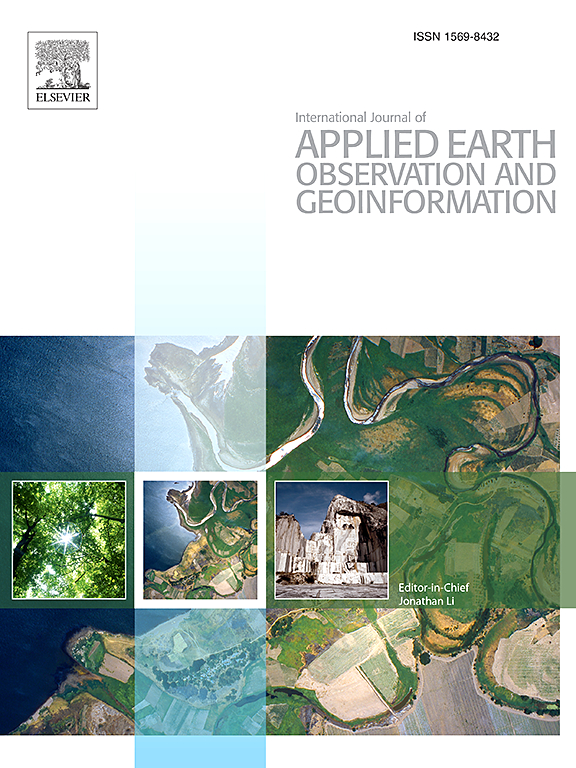Detecting glacial lake water quality indicators from RGB surveillance images via deep learning
IF 7.6
Q1 REMOTE SENSING
International journal of applied earth observation and geoinformation : ITC journal
Pub Date : 2025-02-01
DOI:10.1016/j.jag.2025.104392
引用次数: 0
Abstract
Global warming has accelerated glacier retreat, subsequently leading to the formation of glacial lakes in high-altitude mountainous regions. These lakes represent emerging ecological water systems and could potentially pose significant hazards. Observations of these systems are constrained by their remote locations and the lack of cost-effective monitoring methods, resulting in limited understanding of their dynamics. In this study, we synchronized surveillance monitoring with in-situ water quality measurements at a typical high-altitude glacial lake on the Qinghai-Tibet Plateau. We aim to use images from surveillance cameras to estimate the turbidity parameter, a key indicator of changes in the water environment and the impacts of climate change on high-altitude ecosystems. We segmented RGB images and applied regression modeling with field-measured water turbidity data, and then used deep learning models to accurately estimates turbidity levels and their changes. Our study demonstrates the potential of RGB imagery and deep learning for the long-term, continuous, and high-resolution monitoring of water quality in remote glacial lakes. It presents a novel and cost-effective approach for monitoring these newly emerged and swiftly changing water systems at high altitudes, offering a significant advancement in tracking environmental changes in these critical high mountain regions.
求助全文
约1分钟内获得全文
求助全文
来源期刊

International journal of applied earth observation and geoinformation : ITC journal
Global and Planetary Change, Management, Monitoring, Policy and Law, Earth-Surface Processes, Computers in Earth Sciences
CiteScore
12.00
自引率
0.00%
发文量
0
审稿时长
77 days
期刊介绍:
The International Journal of Applied Earth Observation and Geoinformation publishes original papers that utilize earth observation data for natural resource and environmental inventory and management. These data primarily originate from remote sensing platforms, including satellites and aircraft, supplemented by surface and subsurface measurements. Addressing natural resources such as forests, agricultural land, soils, and water, as well as environmental concerns like biodiversity, land degradation, and hazards, the journal explores conceptual and data-driven approaches. It covers geoinformation themes like capturing, databasing, visualization, interpretation, data quality, and spatial uncertainty.
 求助内容:
求助内容: 应助结果提醒方式:
应助结果提醒方式:


